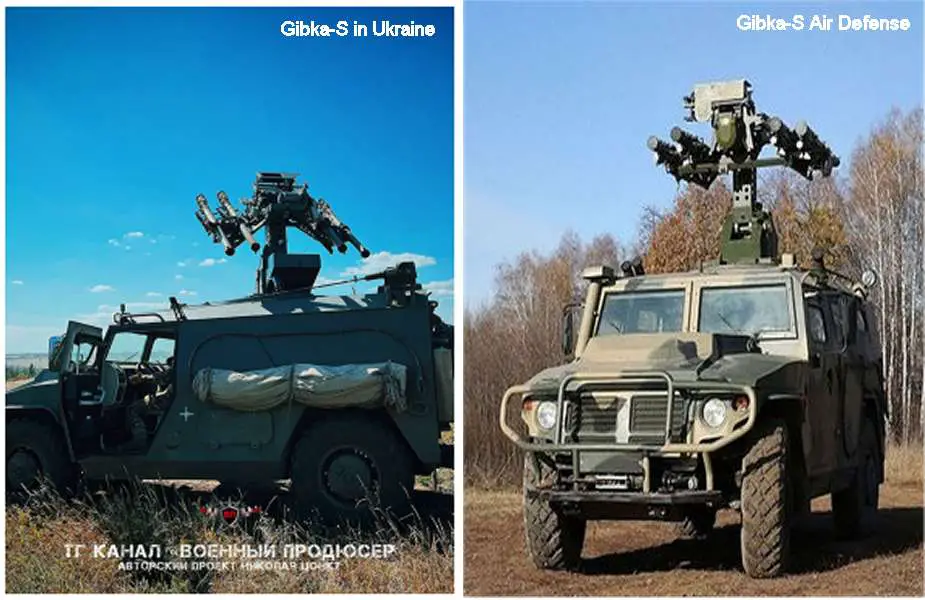Russia increase its air defense capabilities in Ukraine with new Gibka-S mobile missile system
In December 2023, a photograph of the Gibka-S in Ukraine, published on the Russian social network VK, confirmed the deployment of this new short-range surface-to-air missile system. This air defense system, based on the chassis of the "Tiger" armored vehicle, enables the Russian military to significantly increase its anti-aircraft arsenal, offering a rapid and efficient response to diversified aerial threats.
Follow Army Recognition on Google News at this link

Gibka-S system is expected to be extremely useful in protecting supply convoys and other tactical columns from drone attacks. (Picture source: VK social media and Russian MoD)
In recent months, responding to substantial losses, Russia has notably strengthened its short-range air defense capabilities to counter the intensifying threats in Ukraine. This strategic move is aimed at enhancing the defense of its ground forces and key infrastructures against aerial attacks, including drone strikes. Russia has deployed a significant number of short-range air defense systems, such as the Pantsir-S1, Tor-M2, and notably, the Gibka-S, to intercept cruise missiles, drones, and tactical aircraft. These systems, recognized for their agility and effectiveness at close ranges, play a critical role in Russia's extensive air defense strategy. The Gibka-S, in particular, adds a new dimension to this arsenal with its advanced features tailored to address the evolving nature of aerial threats. The focus on short-range air defense, including the deployment of the Gibka-S, indicates a tactical shift by Russia to more effectively counter asymmetric threats like drones, which have become a significant aspect of the conflict in Ukraine.
Developed by the JSC Machine Building Design Bureau, the Gibka-S is currently in the evaluation phase in Ukraine, as reported by our editorial team in August 2023. Officials from Rostec, a Russian state-owned enterprise, have confirmed their ongoing technical assistance for these surface-to-air missile (SAM) systems, with teams regularly visiting the Ukrainian front to provide support.
Integrated into a Tigr-M vehicle, the Gibka-S system is designed to counter a range of aerial threats, including aircraft, helicopters, drones, cruise missiles, and precision-guided weapons. It stands out for its ability to operate effectively at low and very low altitudes, in various visibility conditions. The Gibka-S system is expected to be extremely useful in protecting supply convoys and other tactical columns from drone attacks.
The system is equipped with four missiles, with options including the Igla, Igla-S, or Verba missiles. It can carry a total of 8 missiles, divided into two sections for rapid and convenient deployment. The Gibka-S operates with three firing channels, offering flexibility in various combat scenarios. It can function autonomously or be directed by a higher command post, adapting according to mission requirements.
The missiles used in the Gibka-S system include the 9K38 Igla and the 9K333 Verba. The Igla is a man-portable air-defense system introduced in 1981, while the Verba is the fourth generation of Russian MANPADS, introduced in 2014. The Verba is equipped with a three-channel optical seeker, enhancing its ability to differentiate real targets from decoys.
The use of the Gibka-S in Ukraine serves not only as a strategic tool but also as a real-world test to assess its effectiveness. These tests reveal the system's performance under various combat constraints, a crucial aspect before mass production.























